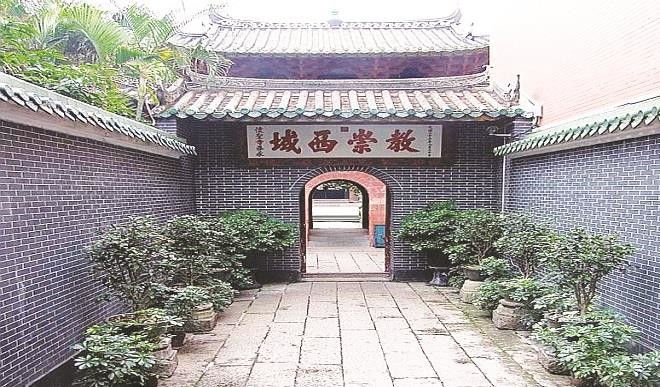
One of the world’s oldest mosques, the historic Huaisheng Mosque, also referred to as the Great Mosque of Canton, in the Peoples Republic of China, is a top attractions, as well as being significant to Islamic culture. During the visit to the largest city in South Central China, which is also a major national transportation hub and trading centre, Daily Trust discovered that Guangzhou boasts of numerous exciting tourist spots. Some are the White Cloud Mountain, South China Botanical Garden, Shamian Island, Canton Tower and a host of others.
Huaisheng is translated to mean ‘remembering the sage’. This great mosque was noted to have been so-named in honour of Prophet Muhammad (SAW) and his teachings.
Interestingly, the Huaisheng mosque bears the hallmark of Islam’s long and riveting history in China. It is believed to have been constructed in 627AD during the Tang Dynasty by an uncle of Prophet Muhammad (SAW), Sa’d ibn Abi Waqqas, noted to have gone on his first Islamic mission to China in the 620s.
Invariably, the mosque located on Guangta Road, is over 1,380 years old. So for a Muslim visitor, the lure of exploring the mosque becomes irresistible. It is even more compelling on a Friday, when a number of visiting Muslims from different parts of the world observe the weekly Jumma’at prayer there. To some faithfuls, who were also there for the first time, the visit was fulfilling. Those who commented were unanimous in their veneration of the mosque. “It did not just impress me as a distinguished place of worship, but also enthralled me as a great attraction,” Ali Muhammad, one of them, asserted.
In the various sections of the mosque, there is a variance of grandeur which speaks volumes. Standing on an area of 2,966 square meters, the mosque showcases among others, the Prayer Hall, the Moon Tower, the Lighthouse Tower (or minaret), and the Covered Corridor, which is part of its charm. It is a distinctive building within the mosque premises.
Standing at an impressive 36 meters and once the tallest structure in the city, that fact quickly gave rise to its other name – the Lighthouse Mosque. It was learnt that the mosque doubled as a lighthouse of sorts, as the minaret was used as a guide post for ships passing through Zhujiang River, and that oftentimes, sailors go up the tower to note the weather conditions.
The moon tower, is also remarkable. It was gathered that the tower is used to observe the moon to determine the time for Ramadan fast to commence.
Another striking feature within the mosque is an ancient well, reportedly sunk from the mouth of a natural spring. A notable thing about this ages-old source of water is that it never dries up, according to oral history. The water is also noted to be crystal clear, and clean. On it is the following inscription: ‘Fountain of life.’
The clean and well-kept religious structure parades a number of thriving trees which adorn the mosque with sublime scenery, just as entwined solid staircases provide for easy ingress to the balcony. On the walls of the corridor are historic relics and the display in this foyer area, which includes ancient pictures of the mosque with insightful inscriptions, expounds on the mosque’s rich history.
The date of the inscription on one of the pictures on display is 1820 and it reads: “An unusual view dedicated to one of the landmarks of the old city of Canton. Erected near the beginning of the Tang dynasty and rebuilt in the 15th century, it was known to Chinese as the ‘Smooth’ (or Unadorned) Pagoda, and to westerners as the ‘Mohammedan tower’. In the early 19th century, the Moslem population numbered about 3,000. The mosque included a school in which children were taught to read the Qur’an in Arabic.”
Another inscription had this: “The Mohammedan Pagoda, originally built during the Tang dynasty, was one of the earliest Islamic sites in China.” Yet another traces the history of settlement at Huaisheng, stated in part: “With rapid development of trade in the early Kaiyuan Reign in the Tang Dynasty, there was a special community for resident aliens called “Fanfang” (the resident aliens community) where many Arabs, Persians and Indians resided with centres in Huaisheng temple.”
Another visiting Muslim, Aisha Ismael, remarked:”The remarkable history and lustre of this legendary structure, are instructive. I remain amazed by the splendour of the mosque.”
Indeed, this giant of ancient times, which has gone through reconstruction over the years, remains revered, by Chinese nationals and visitors from around the globe. For this writer, even though it was a very long journey from Nigeria to China, with a total flight time of 12 hours, it was a memorable holiday treat: Inspiring and instructive.

 Join Daily Trust WhatsApp Community For Quick Access To News and Happenings Around You.
Join Daily Trust WhatsApp Community For Quick Access To News and Happenings Around You.


